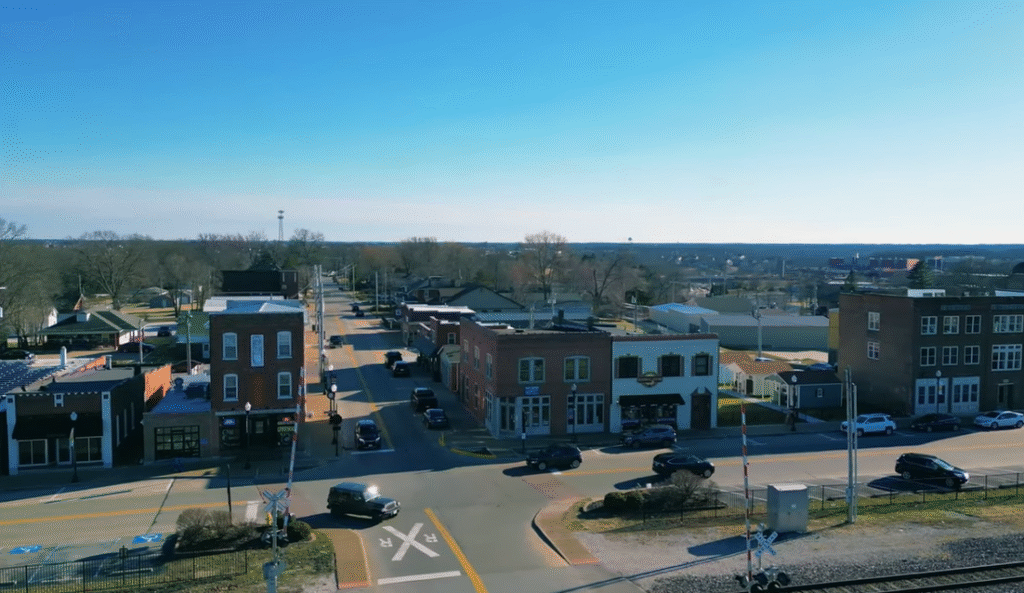From a small exurb to one of the most desirable addresses in the St. Louis metro area, Wentzville, Missouri, has been subtly changing its image. In addition to its convenience, it also strikes a balance between affordability and growth, which is what makes it remarkably similar to America’s most sought-after suburbs.
The foundation of this affordability is housing. Options range from starter homes under $100,000 to multi-million dollar estates, with median prices hovering around $380,000—much lower than in many metro markets. In actuality, this allows buyers to make decisions based on lifestyle rather than budget, which is a luxury that seems especially uncommon in the current competitive housing market.
Being close by is crucial. Wentzville benefits from extremely efficient access for both commuters and remote workers due to the intersection of I-64 and I-70 at its center. Residents can access urban employment and entertainment options without having to deal with the financial burdens that frequently come with city living thanks to the 45-minute drive to downtown St. Louis. This arrangement is a significant improvement over previous decades when the trade-off was less desirable due to lengthy commutes and a lack of amenities.
Wentzville, Missouri – Cost of Living Overview
| Category | Average Monthly Cost (Single) | Average Monthly Cost (Family of Four) | % vs. U.S. Average |
|---|---|---|---|
| Housing | $1,018 | $1,867 | -15.1% |
| Food | $399 | $1,296 | -0.3% |
| Energy | $158 | $271 | -9.5% |
| Transportation | $353 | $750 | -11.7% |
| Healthcare | $280 | $746 | -6.7% |
| Total Expenses | $2,208 | $4,930 | ≈ -3% |
Source: Salary.com

The economic base has changed in recent years. Local jobs are anchored by the General Motors Assembly Plant, and the Wentzville Parkway corridor has developed into a center for professional services, dining, and shopping. Wentzville’s lower operating costs and talent access provide a particularly advantageous edge for medium-sized businesses, which frequently struggle to strike a balance between location and cost.
Housing is only one aspect of living expenses. Healthcare costs are still below U.S. standards, transportation is greatly reduced due to the growth of local jobs, and energy bills are nearly 10% lower than national averages. Food costs, which are almost the same as national averages, represent a good balance between large chains, local grocers, and access to regional farms.
This affordability has caused a wave of migration. The promise of a larger home, a yard, and better schools—all while reducing monthly expenses—is luring families from cities like Los Angeles, Washington, and New York. Many people find that by moving strategically, they can save enough money annually to pay for debt repayment, vacations, or improvements to their homes.
This changing identity is reflected in neighborhoods. Suburban charm and contemporary conveniences are combined in master-planned communities like Carlton Glen Estates and Stone Meadows. Avondale Hills and other upscale communities serve those looking for seclusion, bigger lots, and high-end finishes. The entry cost for first-time homebuyers is still surprisingly low when compared to comparable suburban markets across the country.
Local properties gain long-term value from the Wentzville R-IV School District, which is frequently ranked as one of Missouri’s best. School quality is a particularly creative demand-driver in the field of real estate economics, frequently protecting property values during more general market fluctuations.
But there are obstacles to growth. Constant factors include commercial development, infrastructure growth, and traffic management. Maintaining livability in the face of growth has been made possible by the city’s strategy, which includes building green spaces, enlarging highways, and drawing in diverse businesses.
The new residents are changing the social fabric in a cultural way. Alongside long-standing regional customs, independent coffee shops, specialty eateries, and community gatherings are growing. As a result, there is a highly adaptable blend of the old and the new, with both newcomers and longtime residents contributing to the city’s future development.
The math is strong for families: a household of four’s monthly expenses come to about $4,930, which could double or even triple in coastal metro areas. With room for savings, a single person’s monthly expenses of $2,208 cover housing, food, utilities, transportation, and medical care. The appeal of this cost profile is very obvious: you get more for every dollar you spend.
Wentzville’s trajectory points to a sustained equilibrium between affordability and expansion in the future. The city is in a strong position to continue drawing people looking for both cost-effectiveness and a high standard of living by utilizing its advantageous location, growing its economy, and preserving its sense of community. It’s not just about cutting costs; it’s also about establishing the conditions that allow those costs to be converted into more freedom, stability, and choice.

